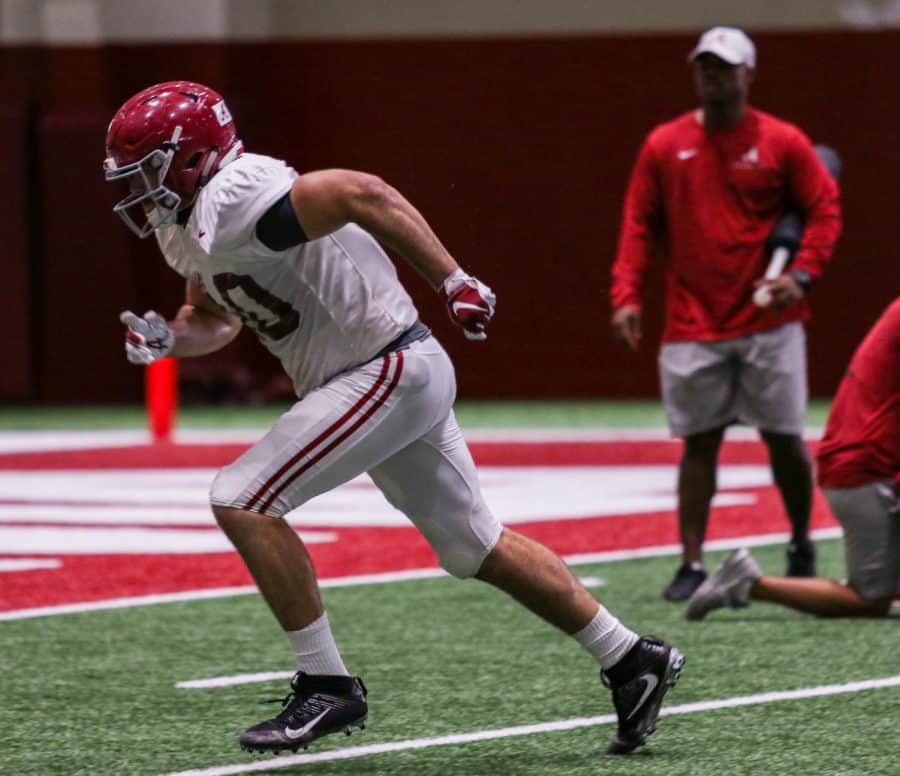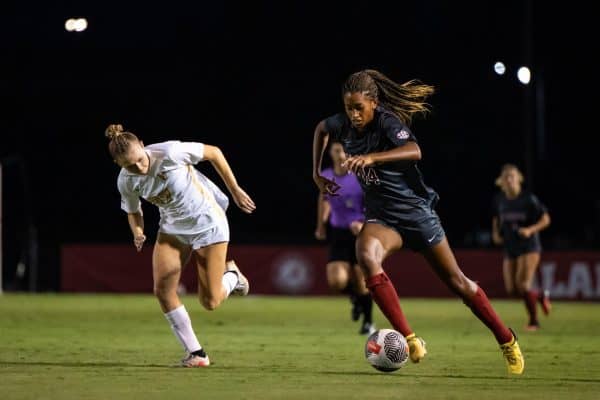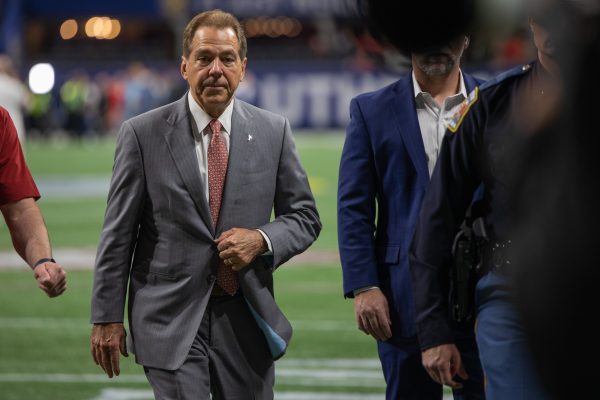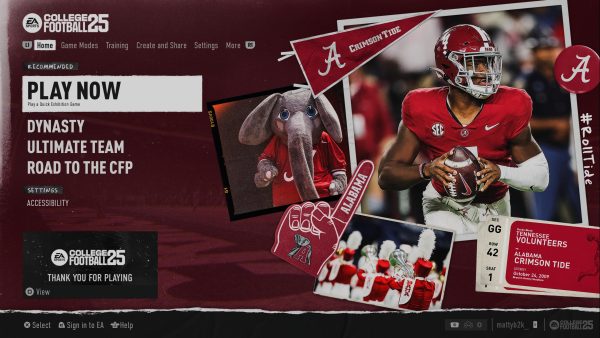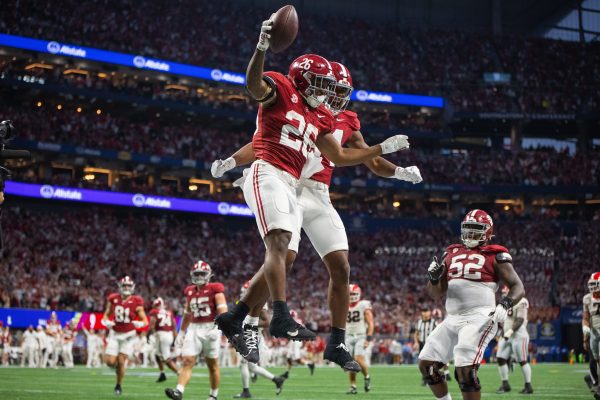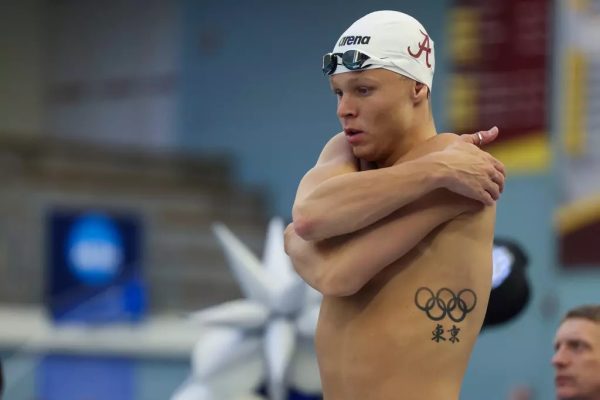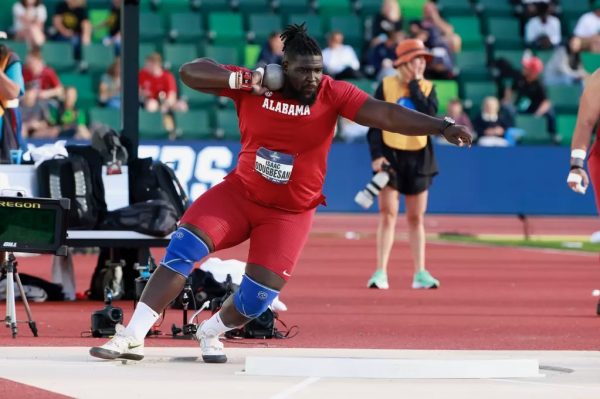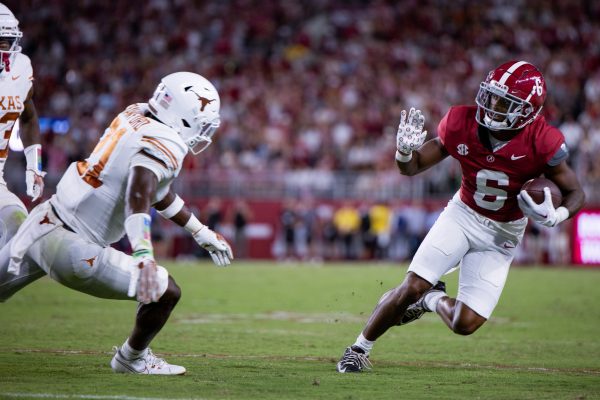Persistence pays off: Senior walk-on earns scholarship
August 28, 2019
Only one freshman ever started for Ronnie Jones during his 40 years as a head football coach: a gregarious wide receiver at a tiny school in Georgia named Giles Amos.
While coaching at the 450-student, K-through-12 Westfield School in Perry, Georgia, Jones ran the Wing-T, an offensive scheme that typically relies heavily on the run game – unless, of course, it has a difference-maker at wide receiver.
“I don’t remember anybody in our league that was really able to cover him one-on-one,” Jones said. “I’m sure in the Wing-T he didn’t get enough balls thrown to him. We knew we had him, so we certainly threw it more than we normally would.”
Jones chose three traits that best describe Amos, now a senior tight end at Alabama: ability, leadership and dedication to the game.
Many receivers who play in a Wing-T offense, Jones said, would lament their lack of touches in the run-heavy system. But not Amos. The 6-foot-4 receiver never once complained about his role, nor did he stand idle on run plays.
“When you watch film and you look at your players, a lot of times you’ll look and if the ball’s going the other way, what’s that [receiver] doing? Is he busting his tail to get over there and block somebody in the secondary?” Jones said. “That’s just the kind of kid that he was.”
As Amos aged, though, the feedback from colleges wasn’t what he and Jones had been expecting. They wished he was a step faster to play wide receiver, and even after Amos switched to play some tight end as a senior, they doubted he could put on enough weight to play tight end in college.
Opposing coaches called Jones to ask which school Amos had signed with, and the answer was always the same: none yet.
“One of my biggest disappointments in my 40 years of coaching – because you can imagine I’ve had some good players along those lines in 40 years – is that he did not get offered somewhere,” Jones said. “I didn’t understand it then and I don’t understand it now … I was real disappointed and really felt like a failure at the time that he didn’t get [anything]. But I did everything that I knew to do.”
The day finally came when Division II powerhouse Valdosta State offered Amos a scholarship, but the coaches called back later the same day to inform him his offer had been rescinded.
At the last minute he decided to send his film to Alabama, telling Jones if he was going to walk on somewhere, he might as well walk on at the best possible place.
“I didn’t think to send my film here before because I was like, if nobody else wants me, why would Alabama?” Amos said. “I got feedback that said to come visit and they said I could come and be a preferred walk-on. So I just kind of took it and ran with it and here we are. It paid off and I wouldn’t change it for any other way.”
It hasn’t always been that way, though. The next summer, before his freshman year at Alabama, Amos doubted whether he would even make the team and wondered if he should just be a regular student.
One conversation with fellow tight end Miller Forristall sticks in Amos’ mind for helping him stay grounded when he couldn’t see the light at the end of the tunnel.
“I remember looking and being like, ‘Dude, how do I get out there and get reps in 7-on-7? How do I do all that stuff?’” Amos said. “And he was like, ‘You’ve just got to go do it, dude … You don’t care what they say, just go out and make plays.’”
Make plays he did. Realizing that the scout team was the best place for him to earn a role on the team, he invested himself fully, earning several scout team player of the week honors.
“Ask some of the DBs the next time they’re up here how covering Giles Amos went on the scout field for the first couple of years,” Forristall said. “I mean, Giles is over top of guys, pulling the ball off. It’s like warmups, and he’s laying out out of bounds.”
Amos said the prospect of earning a scholarship is always in the back of a walk-on’s mind, but he first started thinking it was possible for him when he began traveling with the team last season.
He got his first game action against Louisiana-Lafayette and also played against the Citadel.
With the team’s top-two tight ends from last year now in the NFL, there hasn’t been much depth at tight end, allowing Amos to earn some reps with the first team. He even caught touchdown passes from Tua Tagovailoa in the team’s first spring scrimmage and its first fall scrimmage.
A walk-on earning first-team reps and scoring in scrimmages is a story in itself, but Amos still wasn’t sure it would result in a scholarship.
“To tell you the truth, I felt like maybe I hadn’t earned it yet,” Amos said. “You know, I’ve seen maybe 10 snaps in two games when we were winning by a lot. I got trash time. So I was like maybe I haven’t earned it yet, so maybe I need to go out there and showcase my ability on the actual field and give them a reason to.”
By the final day of fall camp on Saturday, the team’s coaches decided they had seen enough. As the team was about to break off into position groups, coach Nick Saban made one final announcement: Giles Amos had been awarded a scholarship.
“It was really cool and unexpected and that made it even better,” Amos said. “I appreciate Coach Saban for that. It was awesome.”
Jones retired after Amos’ senior season and is now an assistant coach under his son Chance, who is married to Amos’ sister. Still in Perry, a town with roughly the same population as Bryant-Denny Stadium’s student section, he speaks highly of his prized protege.
“It just means so much, the way he’s representing our little town and our little school,” Jones said. “Everybody in the Perry community and Westfield School and including me – I’m extremely proud of Giles Amos.”

